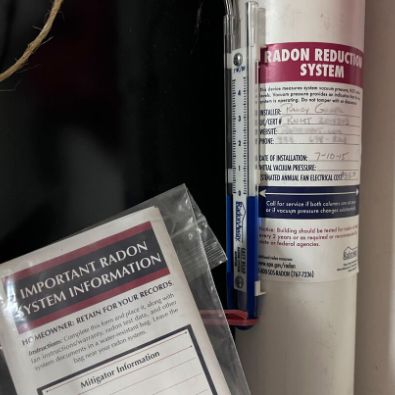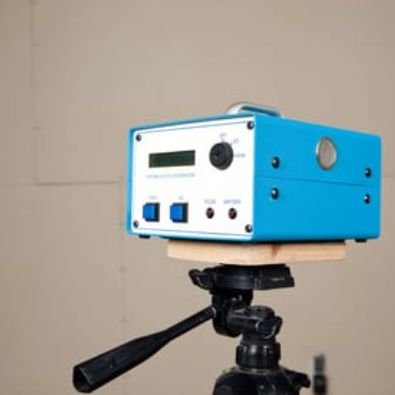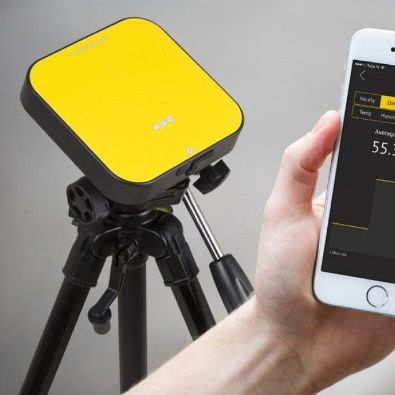Radon Testing & Inspection
Call Now! Schedule Your Radon Testing & Inspection 319-231-4040
The Importance of Radon Testing and Inspection in Gilbert, Iowa
Radon is a naturally occurring, odorless, and colorless gas that can be found in the soil and rocks beneath homes and buildings. It is the second leading cause of lung cancer in the United States and can be found in high concentrations in some areas of Iowa, including Gilbert. At All Iowa Radon, we understand the importance of testing and inspecting for radon in Gilbert, Iowa. Radon testing is the only way to know if your home or building has elevated levels of radon. Testing is relatively inexpensive and can be done quickly and easily. Radon testing is especially important for those who live in Gilbert, Iowa, as the area has been identified as having higher than average levels of radon. The Iowa Department of Public Health recommends that all homes and buildings in Gilbert be tested for radon. In addition to testing, All Iowa Radon also offers radon inspection services. Radon inspections involve a thorough examination of the home or building to identify any potential sources of radon. This includes checking for cracks in the foundation, checking for gaps around windows and doors, and inspecting the ventilation system. At All Iowa Radon, we take the safety of our customers seriously. We are committed to providing the highest quality radon testing and inspection services in Gilbert, Iowa. Our team of experienced professionals is dedicated to helping you protect your family and property from the dangers of radon. If you are in Gilbert, Iowa and are concerned about the potential presence of radon in your home or building, contact All Iowa Radon today. We will be happy to provide you with the testing and inspection services you need to ensure the safety of your family and property.Gilbert, Iowa is a small town located in Story County, Iowa. It is a rural community with a population of just over 1,000 people. The town was founded in 1881 and was named after the Gilbert family, who were early settlers in the area. Gilbert is home to a variety of businesses, including a grocery store, a bank, a post office, and a few restaurants. The town is also home to a number of churches, including the United Methodist Church, the Church of Jesus Christ of Latter-day Saints, and the First Presbyterian Church.
Gilbert is home to a number of parks and recreational areas, including the Gilbert Community Park, which features a playground, picnic areas, and a walking trail. The town also has a public library, which offers a variety of books, magazines, and other materials. Gilbert is also home to the Gilbert Historical Museum, which houses artifacts from the town's history.
Gilbert is home to a number of annual events, including the Gilbert Days Festival, which is held each summer. The festival features a variety of activities, including a parade, a car show, and a carnival. The town also hosts the Gilbert Days 5K Run/Walk, which is held each year in October.
Gilbert is home to a number of unique attractions, including the Gilbert Windmill, which was built in 1881 and is the oldest windmill in the state of Iowa. The town is also home to the Gilbert Carousel, which is a hand-carved wooden carousel that was built in the early 1900s. The carousel is still in operation and is a popular attraction for visitors to the town.
Gilbert is a great place to visit and explore. With its small-town charm, unique attractions, and annual events, Gilbert is a great place to spend a day or a weekend.
Local Radon Testing & Inspection Experts Call NOW! 319-231-4040
Radon has been a part of Gilbert, Iowa’s history since the early 1900s. The town was founded in 1882 and was originally a coal mining town. As the coal industry grew, so did the presence of radon in the area. Radon is a naturally occurring radioactive gas that is produced when uranium and thorium break down in soil and rocks. It is odorless, colorless, and tasteless, and can be found in the air, water, and soil.
In the early 1900s, the coal mines in Gilbert were the primary source of radon in the area. As the mines were dug deeper, more radon was released into the air. This led to an increase in the levels of radon in the town. In the 1950s, the Environmental Protection Agency (EPA) began to monitor the levels of radon in the area. They found that the levels of radon in Gilbert were higher than the national average.
In the 1980s, the EPA began to take steps to reduce the levels of radon in Gilbert. They implemented a number of measures, including sealing cracks and openings in homes, installing radon mitigation systems, and providing education to the public about the dangers of radon. These efforts have been successful in reducing the levels of radon in the area.
Today, Gilbert is still a coal mining town, but the levels of radon in the area are much lower than they were in the past. The EPA continues to monitor the levels of radon in the area and provides education to the public about the dangers of radon. Gilbert is a great example of how a community can work together to reduce the levels of radon in their area.
Contact Us For A Free Quote!
Our team of experts is ready to provide you with personalized guidance and deliver exceptional results.






